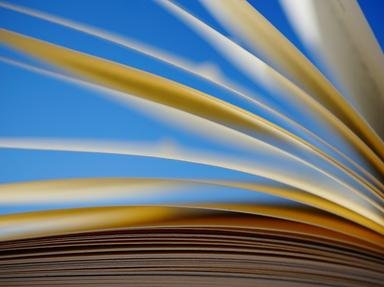Quiz Answer Key and Fun Facts
1. Place names in Australia tend to be, in general, either aboriginal in origin; or named after places in the old world; or named after notable people of the era. It is just as well, Melbourne (pictured) was not named after its explorer that founded the place as it would sound something out of a Super Hero comic.
True or false: Melbourne could have been called Batmania.
2. "Wagga" is an aboriginal word for crow. In some aboriginal languages, plurals are indicated by repeating the word. Wagga Wagga is New South Wales' biggest inland city.
True or false: Wagga Wagga, means "place of many crows".
3. Sometimes Australian place names are a combination of an Aboriginal word and a European word. Bundaberg is a pretty city in coastal Queensland.
True or false: "Bundaberg" the place name is a combined name meaning "Rum Town".
4. Australians are not great spellers. The name of its largest city is Sydney.
True or false: Sydney was meant to be named after the founding father of New South Wales, Captain Sidney Phillips.
5. Gold Coast is Australia's sixth largest city, due in part to the popularity of having over 40 km of golden beaches as part of the city.
True or false: "Gold Coast" was originally a nickname relating to expensive real estate in the region.
6. Most people believe Brisbane is named after Sir Thomas Brisbane, NSW governor at the time of its discovery. The Brisbane River had already been named after the current NSW governor in 1823.
True or False: Brisbane was called Edenglassie first, before adopting the same name as its river.
7. Rockhampton is a beef and cattle city in Central Queensland.
True or false: Rockhampton is named after the river it sits upon - the Rocky River.
8. A lot of Australians believe the "Nullarbor" is an Aboriginal word.
True or False: "Nullarbor" is Greek for "No Trees"?
9. Tasmania is not Antarctica.
True or False: The town of Penguin is *NOT* named after a penguin.
10. Alice Springs is a typical example of Australian cynical humour. The river through the town is dry, hence the name Alice Springs.
True or False: Alice Springs is named after Queen Victoria's daughter, Princess Alice, and a dry waterhole.
Source: Author
1nn1
This quiz was reviewed by FunTrivia editor
looney_tunes before going online.
Any errors found in FunTrivia content are routinely corrected through our feedback system.

